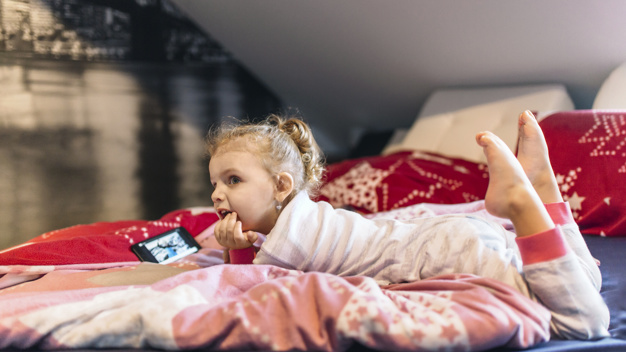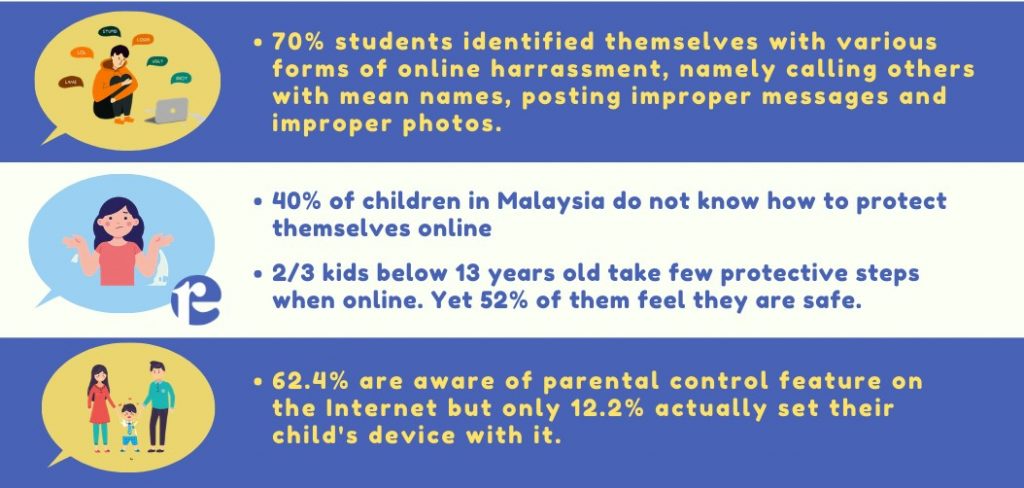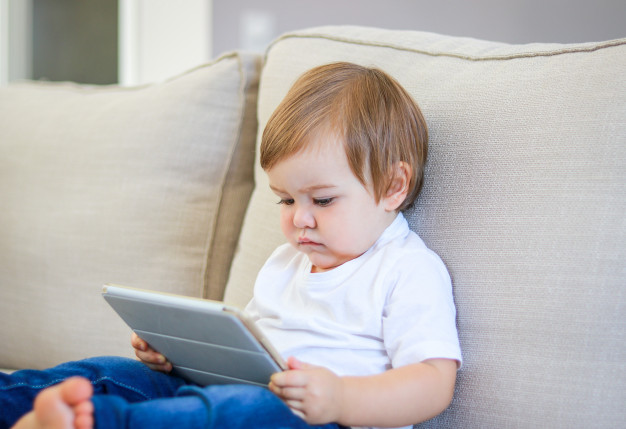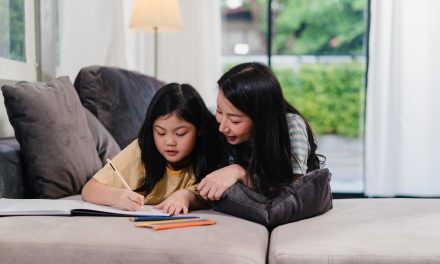As parents, we’ve all heard about how the exposure to technology at a young age can influence a child’s cognitive, physical and social-emotional development. And this can be really perplexing for us because we also know useful these devices can be in supporting their learning development and acting as a pacifier at times. In the era where your child learns his ABC through watching Sesame Street, learns about the spirit of friendship by watching Paw Patrol, and learns how to count from playing interactive games, to what extent should we limit our child’s tech use? How much screen time should we give to our child? More importantly, at what age do we start exposing them to technologies?
A BIG NO-NO FOR CHILDREN BELOW TWO
According to the American Academy of Pediatrics (AAP), a child below 2 years old should not be introduced to gadgets at all, as this often disturb their sleeping pattern. Electronic devices such as handphones and tablets radiate blue lights which have been identified to reduce the sleeping hormone in the body called melatonin. Hence, exposure to such devices might affect the baby’s sleeping cycle as a baby below 18 months typically needs 13-15 hours of sleep every day.
At this age, children should be focused on interactive floor-based activities and unstructured playtime that stimulate their senses and creativity. Nevertheless, for parents who are staying far from your baby, don’t worry too much. The AAP noted that it is okay for babies below 18 months to be video-calling as it promotes quality time with the loved ones.
CO-VIEWING FOR TODDLERS AND PRESCHOOLERS

“Co-viewing” or the action of watching videos with your child is encouraged for those who want to start to introduce technologies to their little ones at the age of 18 months. Through co-viewing, parents can pose some questions to test their child’s understanding and explain the video to their child as they watch it together. In fact, research has shown that children develop a better understanding and pay more attention to video content when their parents guide them through it (Barr et al. 2008).
A study by Hopkins et al. (2013) found that these days, preschoolers are better at learning and navigating through electronic devices than books, demonstrating how early they are exposed to technology. While this doesn’t necessarily equate to bad parenting, it is also imperative for parents to ensure that the contents that their children are watching are of high-quality and can impart knowledge and morale, not just a random auto-play on the net. For those below 5 years old, best to restrict their screen use to only an hour a day.
SETTING THE LIMIT FOR THOSE IN PRIMARY
When CyberSecurity Malaysia (CSM) conducted a survey on social media ownership on more than 8,000 primary and secondary students across the country, the result was staggering. Approximately 50 per cent of children aged between seven and nine admitted to having at least one social media account.
Just like the adults, kids are now utilising technology to connect with people, express themselves, as an assistive tool for learning, and as a way to be updated on what’s currently in trend. Therefore, it would be unfair to fully constraint their usage as being able to manoeuvre digital devices are necessary for them to navigate the digital era. What you can do as a parent is to teach them how to use their devices and the Internet safely.
You can start by setting the “Do and Don’ts”, introducing them to educational contents and explaining to them about privacy as well as security. Children should be advised to be mindful to not write negative or discriminatory remarks online, or put out any information that can be dangerous to others nor themselves. They need to be aware of they are predators out there and not to easily trust everyone they know on the Internet.
Learn how to set parental control on your child’s devices and set guideline for timings and days for when the child can use his devices. If they do not adhere to this, then you can take their devices away as a way of disciplining them.

Source: MCMC and CyberSecurity Malaysia
ALLOW MORE FREEDOM FOR THE TEENS
Teens a.k.a ‘digital natives’ are probably more expert than you when it comes to technology, so you can’t really sit beside them all the time and observe what they do on the Internet. Now that you have already taught them the basics, give them more freedom to explore the things on the Internet but occasionally check what they are using it for. Have a casual talk on the matter, ask them if there’s anything interesting that they learn about or found out today. You might get to know something new too!
As parents, we also need to understand that the Internet is a big space and sometimes your kids can get lost and accidentally stumble upon some inappropriate contents like pornography and violent videos. 98 per cent of the time (not actual statistics, by the way), they wouldn’t tell you about it but if they do, or if they get caught watching these content, don’t flip. Rather than reprimanding them, deal with it calmly. Remind them that with trust comes responsibility. If they cannot use the freedom given to them responsibly, then you, as a parent, have the right to take away the liberty given to them. This way, your child will understand you better and more likely not to repeat the offence again.
Read: Helicopter Parenting – Does it make or break your child?
In order to ensure that our kids are up-to-date with information and able to stay connected with others, it is best to allow children to engage with devices and digital activities optimally. Too much or too little exposure could bring adverse results. So now parents, it’s up to you to decide on what is best for your kids.








